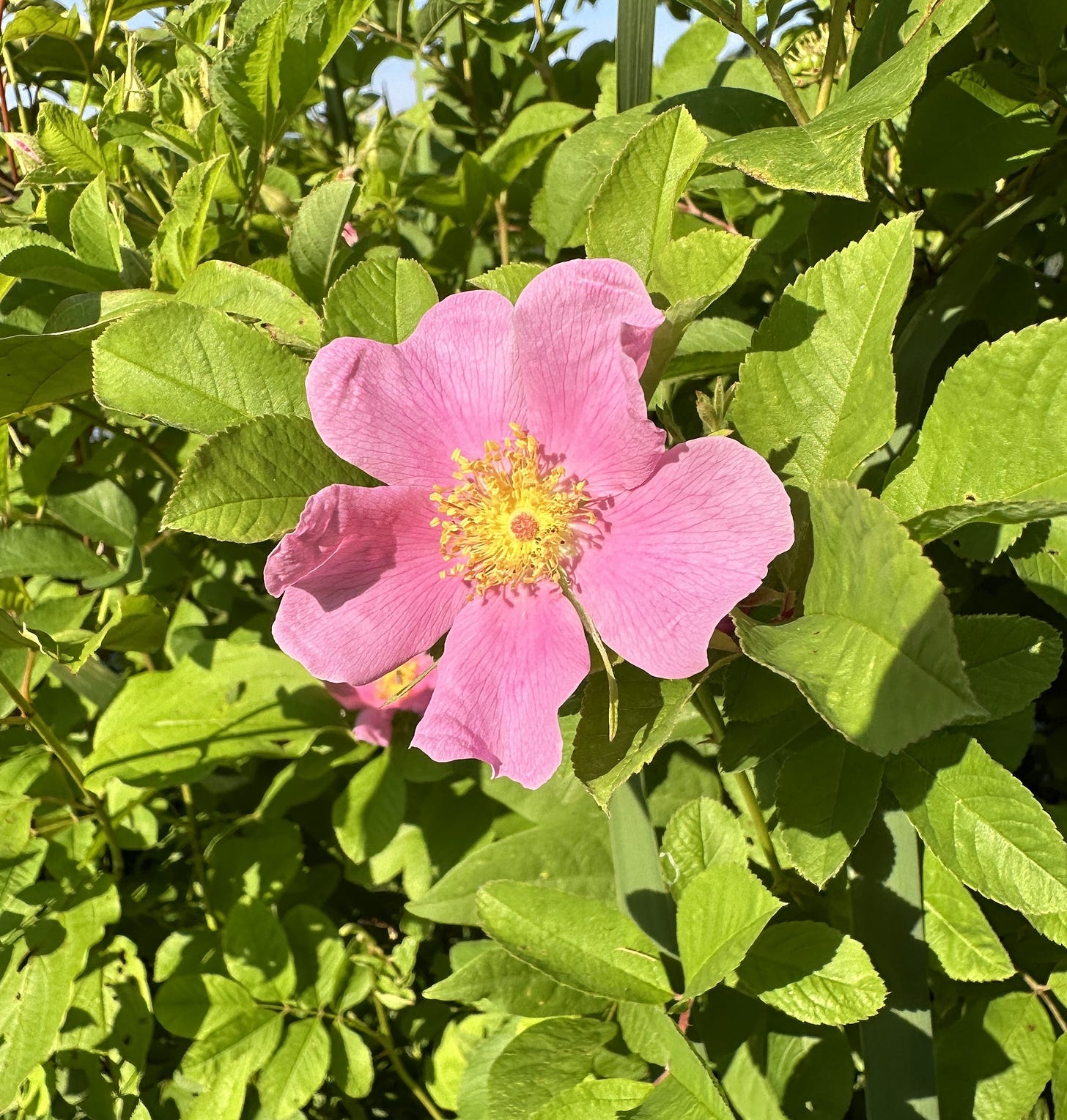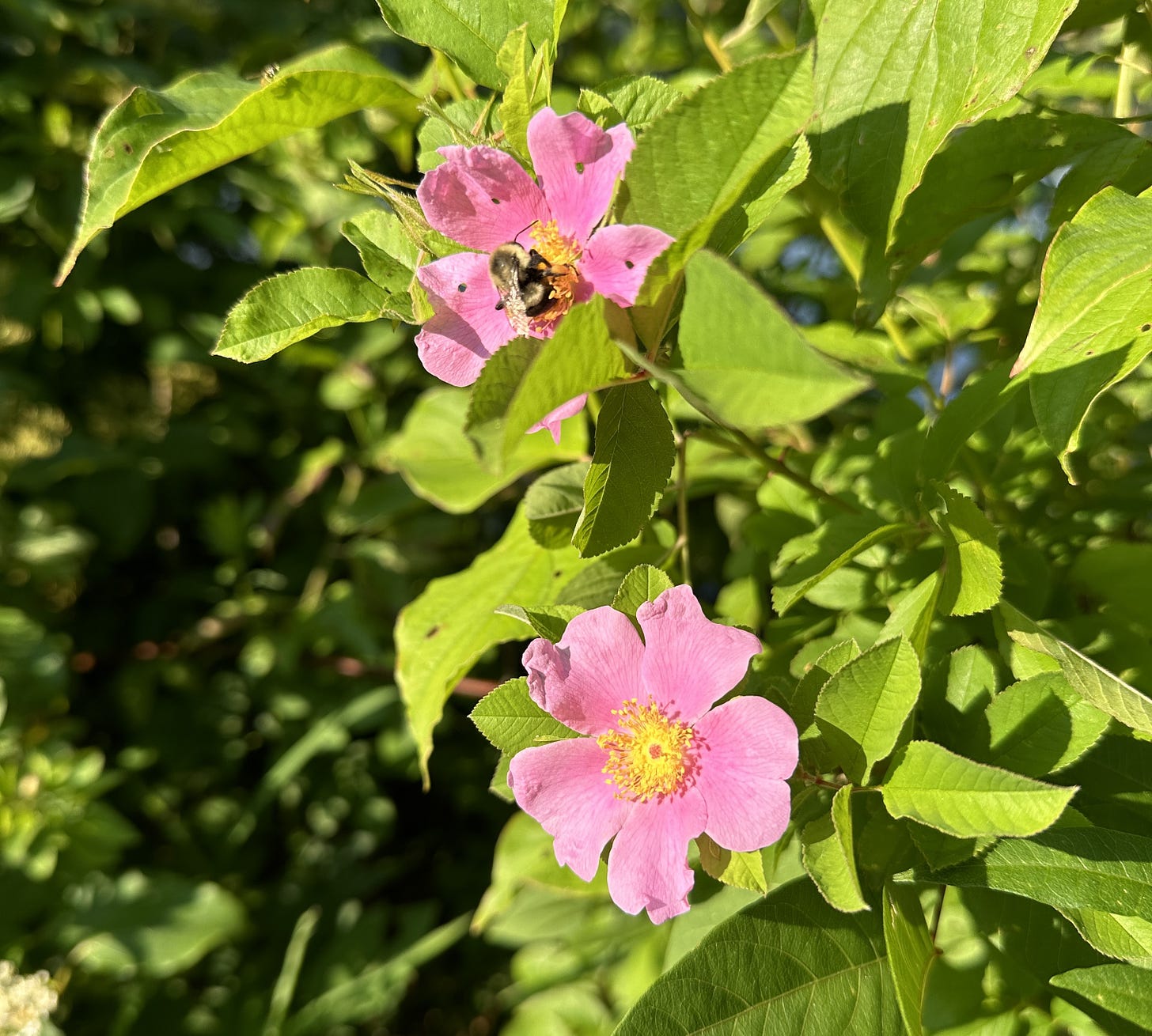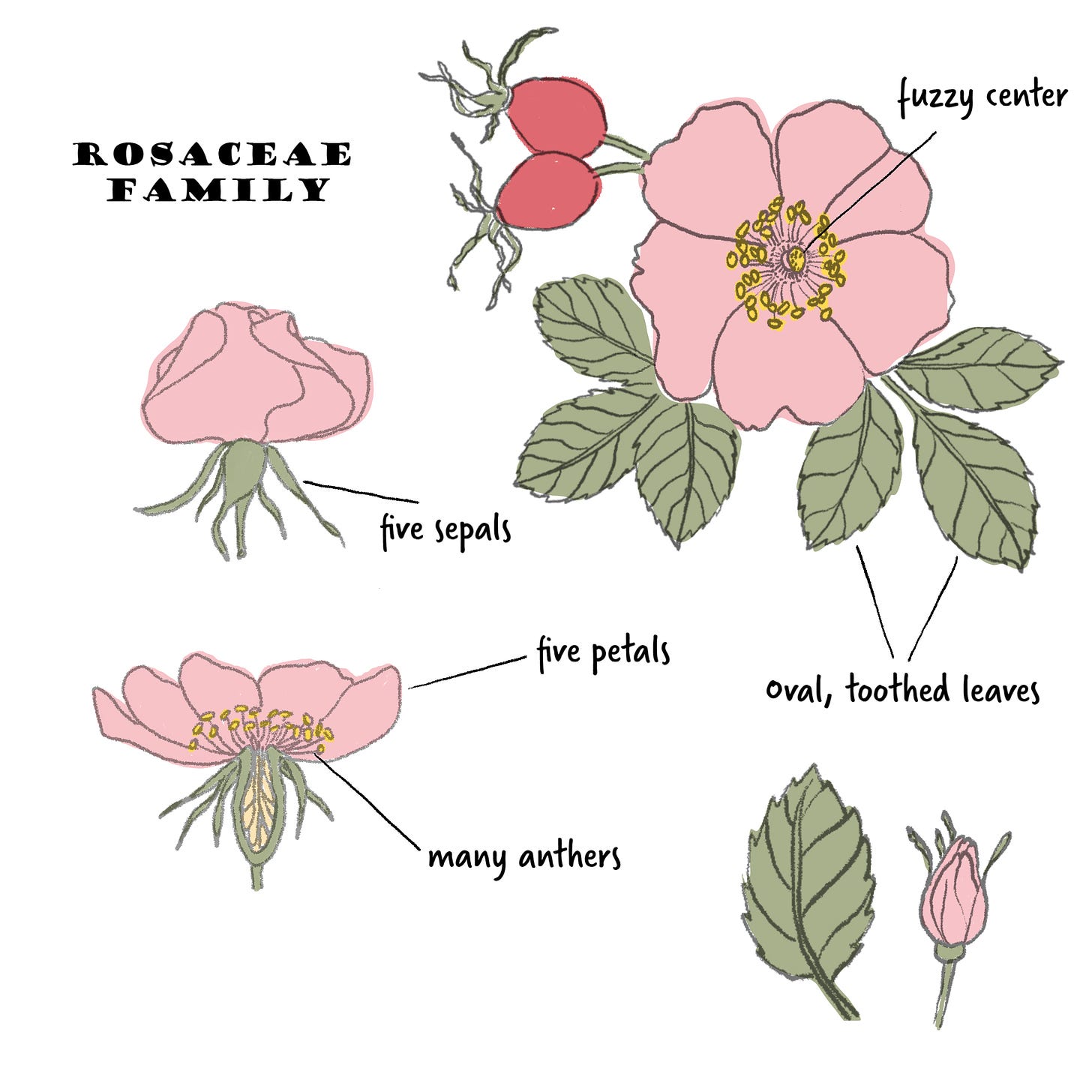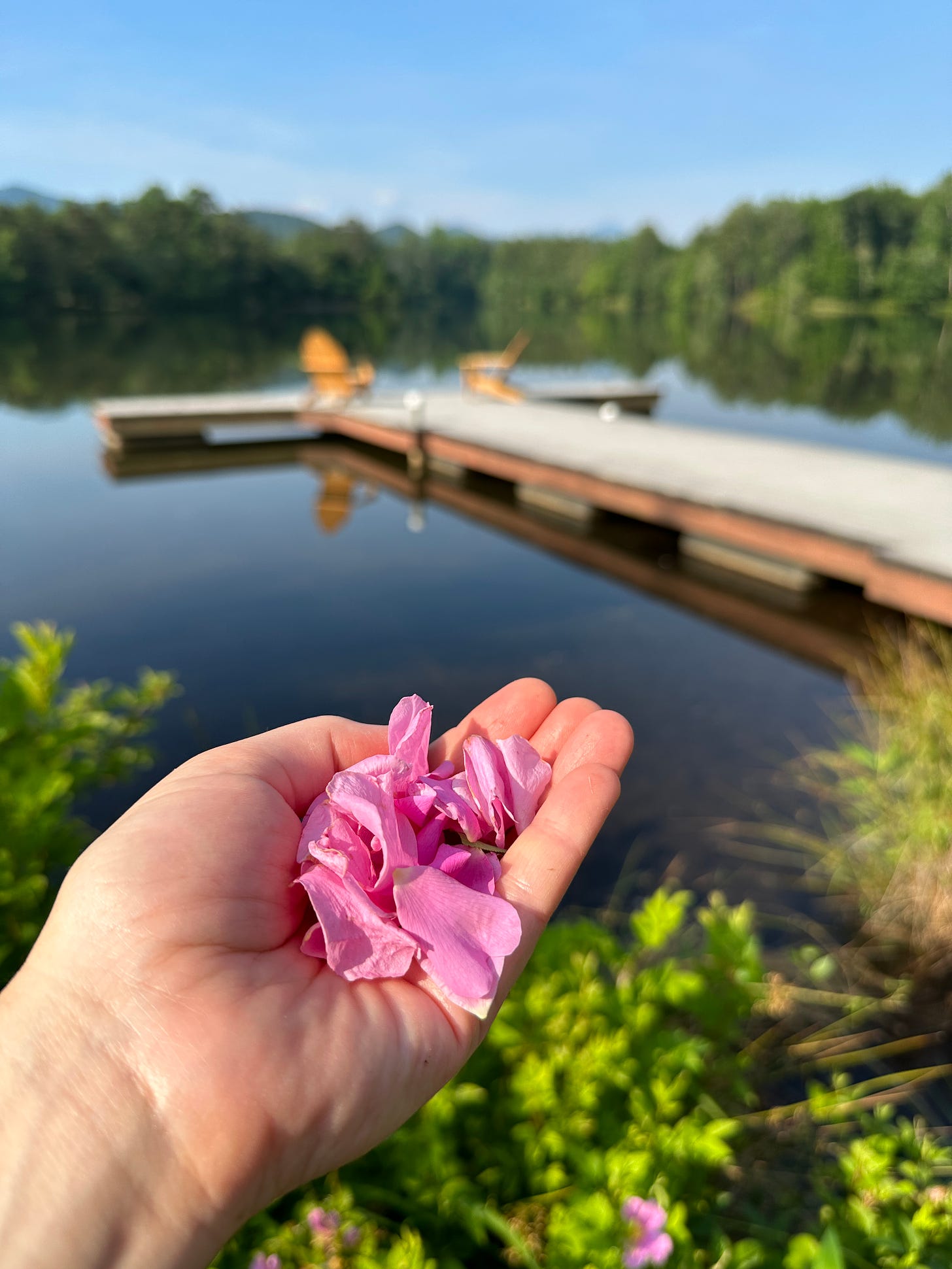Happy Solstice Everyone!
Plant Identification
A few months back I asked you all what kinds of posts you are interested in and many of you said you’d like information on plant identification. So, this will be the first in a series of posts about how to identify unfamiliar plants.
But first a question: How do you go about identifying unfamiliar plants in the wild?
Are you a field guide person? Or do you use an app?
These days, it seems like people are relying more and more on apps. And I get it. Apps are quick, convenient, relatively cheap and readily available given that most of us have our phones on us all the time.
I use apps fairly often myself, despite being a devotee of field guides. But, every time I use an app, I can’t seem to shake a certain hollow feeling. Sure, its quick and its easy, but it also feels, well, a little cheap. Right?
So, I’d like to offer an alternative. What I offer, won’t take the place of your app, but it just might serve as a little something extra to make your next identification experience more rewarding.
Plant Morphology
The good news is that plant ID without and field guide or an app, doesn’t have to be complicated and, contrary to popular belief, doesn’t require loads of Latin or Greek memorization.
It’s all based on recognizing patterns.
Humans have been using patterns to identify plants since the dawn of time. It’s part of what kept us alive and helped us understand what plants were safe, medicinal or not safe. So trust me on this, once you get the hang of it, it’ll likely feel like second nature.
The technical term for identifying plants based on patterns and common characteristics is morphology (morph=shape or form | ology=the study of).
Of course, using Latin or Greek terms makes it mandatory to mention (albeit briefly) our old friend, Linnaeus. And that’s because Linnaeus was the first to standardize the study of plants using morphology.
His careful classification of plants according to shared characteristics gave rise to the Latin nomenclature system (Genus + species) and created an incredibly useful, universal language for scientists around the world to use. Of course, in today’s world, most scientists use molecular genetics to categorize and organize plants into families (which is why plant names and families are always changing.)
But DNA aside, us lay folks can still use some of Linnaeus’ organizational techniques to help us identify unfamiliar plants.
In fact, it’s really kind of fun. I find it also helps me keep some skin the game and avoid that empty, bystander effect that I mentioned above.
All you have to do is memorize some simple family characteristics, and you’ll be well on your way to identifying thousands of plants.
Over the course of the summer, I’ll be publishing a series of posts that will teach you how to identify the characteristics of eight common plant families.
Knowing these characteristics will help you identify over 45,000 plants worldwide!
And because the air is thick with their heady fragrance right now, I’ll start with the Rose family.
Rosaceae Family
What comes to mind when you hear the word, rose?
I would venture to guess that for most people what comes to mind is an image of the classic red flower. Something like this🌹. Of course, most people can also easily identify the fragrance and many even count the rose as their favorite flower when asked. Nevertheless, for the average person, that’s about as far as the rose ‘thought experiment’ goes.
We’ve been trained to think of roses in a very specific and limited way. But the story of the rose is far more ancient and more varied than you may think.
So Many Roses, So Little Time…
The Rose family has around three thousand members. This includes trees, shrubs, perennials, climbers, and annuals. And what’s more, most members of the rose family produce edible fruit, many of which you probably eat on a regular basis. These include apples, peaches, pears, plums, almonds, cherries, blackberries, strawberries and raspberries to name a few…
The commercial and horticultural value of the Rosaceae family can’t be overstated.
The earliest fossils of the Rosaceae family go back 100 million years to the Cenozoic period. That was the time when flowering plants really started to diversify.
Nevertheless, most of the flowers in the Rosaceae family remain fairly unspecific in terms of pollinator relationships—unlike say, orchids which evolved highly specialized relationships with their favorite pollinators.
Roses are what you would call generalists and, as a result, welcome all manner of pollinators with their bright blooms and enticing fragrances.
Family Characteristics
Ok, now that you know a little bit about the long history and incredible diversity of this most famous of families, you’re probably eager to learn how to identify them!
So without further ado….here are the Rose Family characteristics:
5 petals
5 sepals
many stamens
a fuzzy center
oval-shaped (ovate), serrated leaves
Easy—right? Basically, if you can identify these five attributes in the unfamiliar flower you are looking at, chances are you’ve got yourself a member of the rose family.
Think about it—knowing these four attributes will help you identify over three thousand plants! How cool is that?
I hope these newfound identification skills will prompt you to get outside and start enjoying summer in a whole new way. Maybe you can use them to forage for wildflower tea!
Here is a little video I did last summer about collecting wild rose petals for tea.
Beauty-full Benefits
Besides their many medicinal benefits, Roses been used for centuries as a beauty aid. They’re full of vitamin C and are astringent, but also equally cooling, making them the perfect addition to your summer skin care routine.
A great way to enjoy & utilize the benefits of wild rose is to make rose water.
I put mine in a spray bottle, which I use it in the evening, after I wash my face and just before bed—like a kind of floral nightcap! * I find it refreshing and soothing way to settle in for bed.
*I also recently learned that besides being good for your skin, studies have also shown rose-scented sleep can also improve your memory!
So again, I hope this post will inspire you to get outside and enjoy the beauty and benefits of wild roses! And for Flora & Forage Insiders, I’ve included a little bonus for you below—a Wild Rose Water recipe card. Enjoy!







